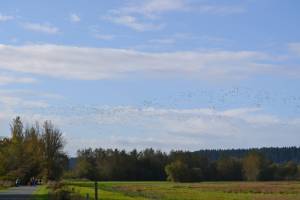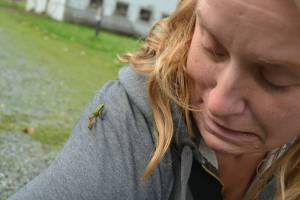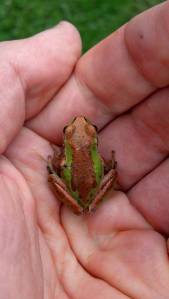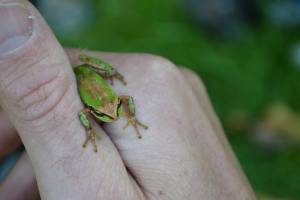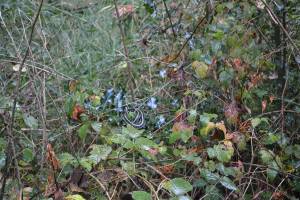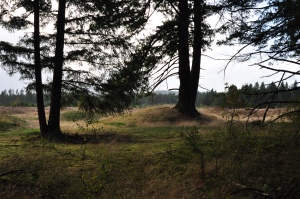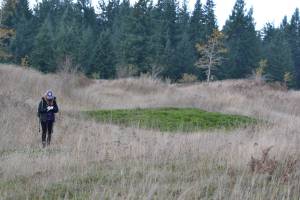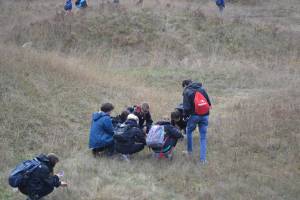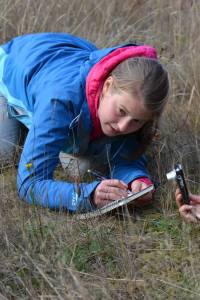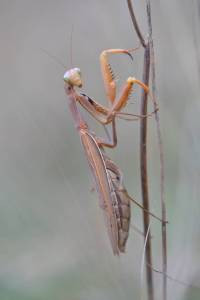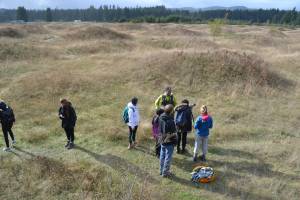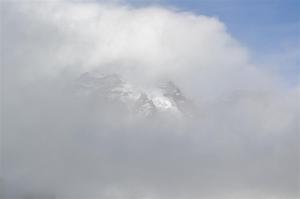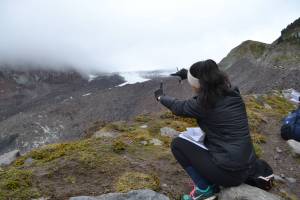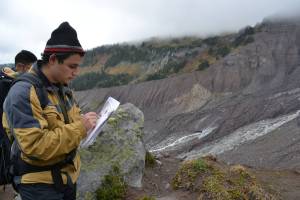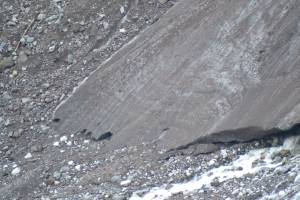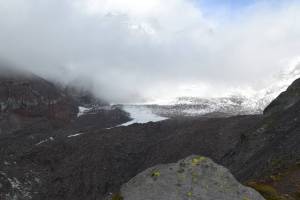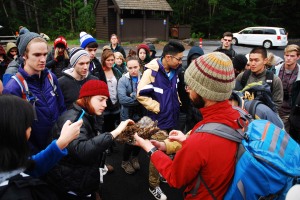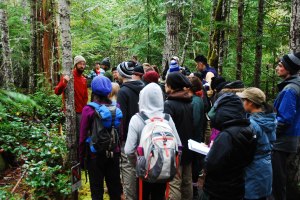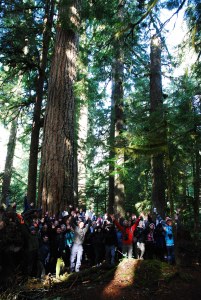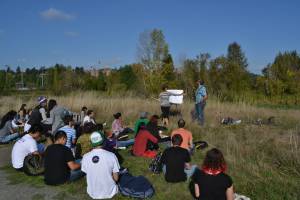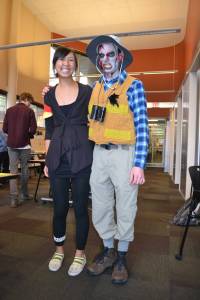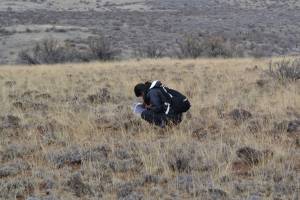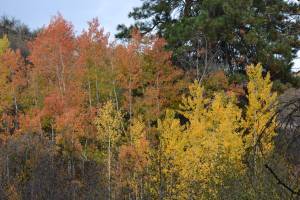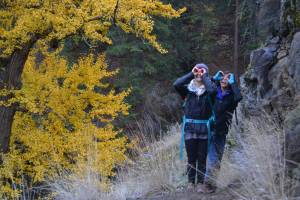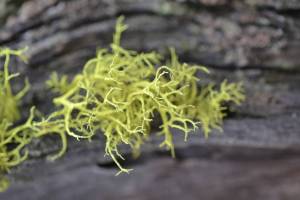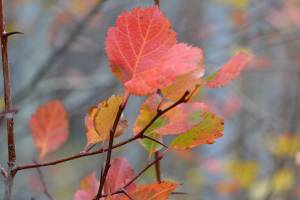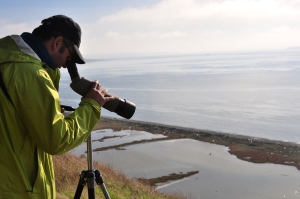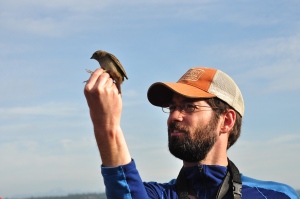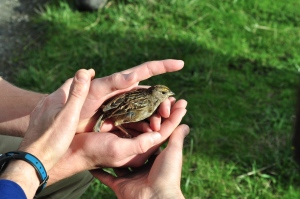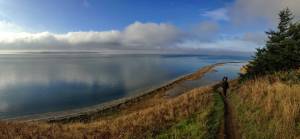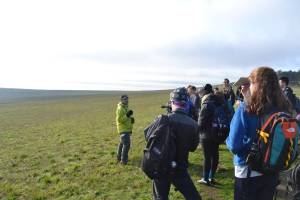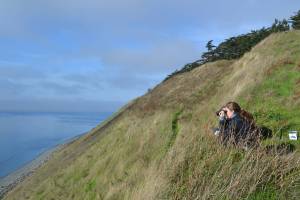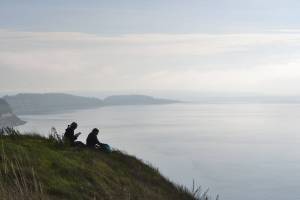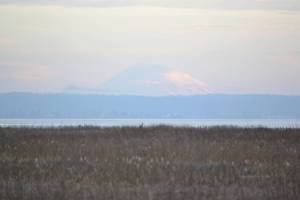Fall in the northwest! This was the first offering of ENVIR 280 in the fall (as opposed to spring), and we weren’t sure how it would work out. But it worked out splendidly, with awesome opportunities to explore the alpine and glaciers, chances to witness migration in full swing, plenty of life in the lowlands as the summer wound down, and an opportunity to see the fall colors come out as the landscape readied itself for winter. Thanks everyone for a great quarter! And a special thank you to the freshman FIG cohort who took a chance and made this one of their first classes of their college career. Hope to see you all again soon.
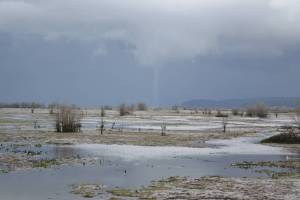
Nisqually Delta, looking out to the Puget Sound. Tornado approaching. Not what you want to see when you are leading a course. Luckily it veered away from us, and then the weather improved.
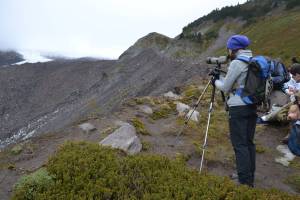
A cloud layer descends over the lower Nisqually Glacier. The group studies the ice from the lateral moraine.
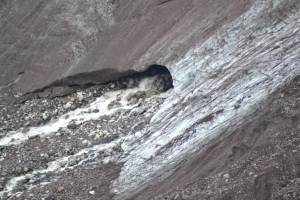
In the Puget Sound region, you don’t have to travel back to the ice age to understand what glaciers are and how glaciers work. Here is the outwash stream of the Nisqually Glacier from the moraine.
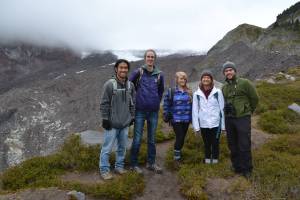
Intrepid students of natural history braving the cool weather of our approaching winter on the mountain.
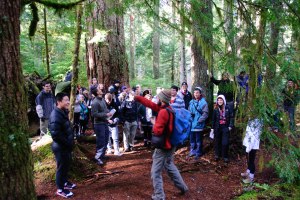
Teaching in the grove of trees that hooked me on the natural history of the Pacific Northwest. Thanks to my mentor at the time, Valerie Bowen, for introducing me to this grove in 1997.
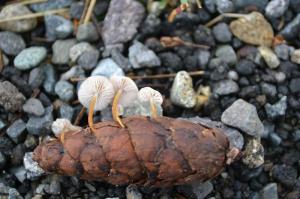
The remarkable Douglas fir cone mushroom, specific to, you guessed it, Douglas fir cones. We found this one beneath an old growth Douglas fir canopy in Mt. Rainier National Park.
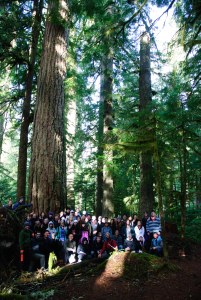
The group poses in the old grove low on the slopes of Mt. Rainier. Thanks to Jorge Tomasevic for the photo.
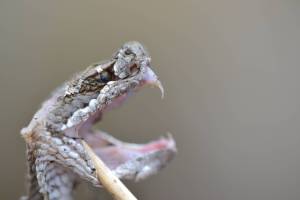
To the east side to escape the rain. Examining the fangs and pits on this recently deceased rattle snake, now a specimen at the Burke Museum.
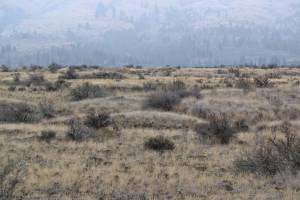
Mima Mound-like formations on Umtanum Ridge. The lithosol community is going dormant this time of year, and the cold winds of winter are returning. A far cry from the colorful palette of the spring landscape on Umtanum Ridge.
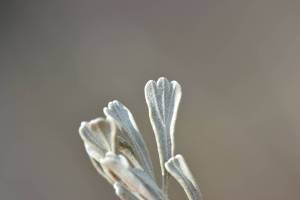
The fine hairs covering the leaves of Tall Sagebrush help it resist moisture loss in this windy, dry environment.
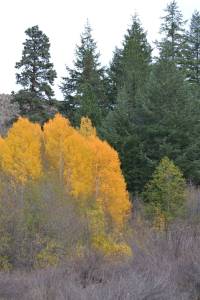
An aspen grove turns yellow, trees are probably all clones of each other. On the east side, Douglas fir is shade tolerant (relative to Ponderosa Pine), in the background.

